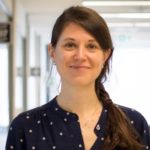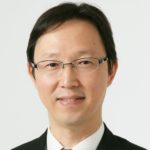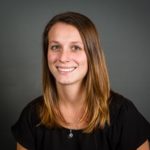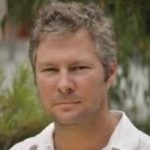Open call for papers to contribute to themed collection for Journal of Materials Chemistry C: Photon Upconversion Materials
The field of photon upconversion materials has been booming in recent years. There are several reasons why researchers explore these systems for potential applications in fields as diverse as solar energy conversion, photochemistry, and biomedicine.
The two main classes of materials are organic compounds undergoing triplet-triplet annihilation photon upconversion and inorganic upconverting (nano)materials based on rare earth elements. Both fields have much in common, but have rarely been connected. To overcome this separation of similar research fields, this special collection embraces the similarities and differences of the two upconversion fields.
Guest Editors:
Dr. Eva Hemmer is an Associate Professor of Materials Chemistry at the University of Ottawa. She received her PhD (2008) in materials science from Saarland University (Germany) under the mentorship of Prof. Sanjay Mathur. During her graduate studies she focused on single-source-precursors and their application in the bottom-up synthesis of inorganic nanomaterials. This experience was further deepened during her postdoctoral studies when she worked on rare-earth-based nanoparticles for near-infrared bioimaging with Prof. Kohei Soga (Tokyo University of Science, Japan, 2009-2012). In 2013 she was awarded a Feodor Lynen Research Postdoctoral Fellowship from the Alexander von Humboldt Foundation to work in the groups of Profs. Fiorenzo Vetrone and Francois Légaré at Institut National de la Recherche Scientifique (INRS-EMT, Université du Québec, Canada, 2012-2015) to develop rare-earth-based optical nanothermometers. In winter 2016 Dr. Hemmer came to Ottawa; since then, her research focuses on new designs of rare-earth-based nanoparticles for bioimaging, optoelectronic and optomagnetic applications, accompanied by chemically controlled synthesis, surface chemistry, and understanding of structure-property relationships. She received the 2021 Jubilee Global Diversity Award of the ACerS (American Ceramic Society; Engineering Ceramics Division), as well as the 2021 Early-career Achievement Award in Nanoscience and Nanotechnology by NanoOntario. Her commitment to higher-level education and to the broader materials community – for instance as active member of the American Ceramic Society or as Chair of the Student Engagement Sub-Committee of the Materials Research Society – was recognized with the AcerS‘ Du-Co Ceramics Young Professional Award.
Nobuo Kimizuka received his Ph.D. in 1990 under the supervision of Prof. Toyoki Kunitake at Kyushu University.
After working as a postdoc with Prof. Helmut Ringsdorf at Johannes Gutenberg University Mainz, he was promoted to associate professor in 1992 and full professor in 2000.
In 2020, he was appointed as a Research Supervisor, JST CREST, “Precise arrangement toward the functionality of molecular systems” (2020-2027).
His work encompasses the synthesis, structure, properties, and functions of molecular self-assemblies and coordination nanomaterials.
In recent years, he has focused on developing supramolecular photon energy conversion systems based on designed molecular systems: photon upconversion, molecular solar thermal fuels, and singlet fission.
Lukasz Marciniak is a professor in physics at the Institute of Low Temperature and Structure Research, Polish Academy of Sciences, Wroclaw, Poland. His current research focuses on the synthesis and the characterization of the luminescent properties of advanced multifunctional materials in a form of nanocrystals, colloidal solutions, microcrystalline powders, glasses, and single-crystals with the special emphasis on their application in remote sensing and imaging of physical and chemical parameters i.e. temperature (luminescent thermometer), pressure (luminescent manometry) and pH. He conducts interdisciplinary scientific research on a border of physics, chemistry, chemical engineering, material engineering, and biology.
Dr. Lea Nienhaus earned her B.Sc. from the Universität Ulm, Germany in 2010 and her Ph.D. from the University of Illinois at Urbana-Champaign in 2015. She then moved to MIT to work with Professor Bawendi as a postdoctoral associate. She began her independent career at Florida State University in the Fall of 2018. The Nienhaus group is interested in unraveling the complex photophysical processes occurring in hybrid upconversion systems by a combination of optical spectroscopy and scanning probe microscopy.
Professor Timothy Schmidt was educated at The University of Sydney, winning the University Medal for Theoretical Chemistry in 1997. He undertook his PhD at The University of Cambridge in the field of femtosecond spectroscopy under the supervision of the late Dr Gareth Roberts. He was a postdoctoral research associate of Prof. Dr John Paul Maier, FRS in Basel, Switzerland, where he researched highly unsaturated hydrocarbon molecules of astrophysical relevance. Tim returned to Australia in 2003 to take up a position at CSIRO researching artificial photosynthesis. He was appointed as a lecturer in the School of Chemistry at The University of Sydney in 2004 and there rose to Associate Professor before moving to UNSW in 2014 as Professor and ARC Future Fellow. At UNSW he is Research Director of the School of Chemistry and Chief Investigator of the ARC Centre of Excellence in Exciton Science. Professor Schmidt has been the recipient of a number of awards for his research including the Coblentz Award (2010) for contributions to the science of molecular spectroscopy.
About this call
Submissions to the journal should contain chemistry in a materials context and should fit within the scope of Journal of Materials Chemistry C. Please see the journal’s website for more information on the journal’s scope, standards, article types and author guidelines.
For this open call, we welcome full Papers and Communications.
If you would like to contribute to this themed collection, please submit your article directly through the Journal of Materials Chemistry C submission service. Please mention that your submission is a contribution to the ‘Photon Upconversion Materials’ collection in the “Themed issues” section of the submission form and add a “Note to the Editor” that this is from the Open Call. Please do not mention the collection in your cover letter.
All submissions will be subject to assessment against the journal’s usual scope and standards criteria and sent for peer review only if appropriate. Accepted articles will be published online as soon as they are ready and added to the web collection.















